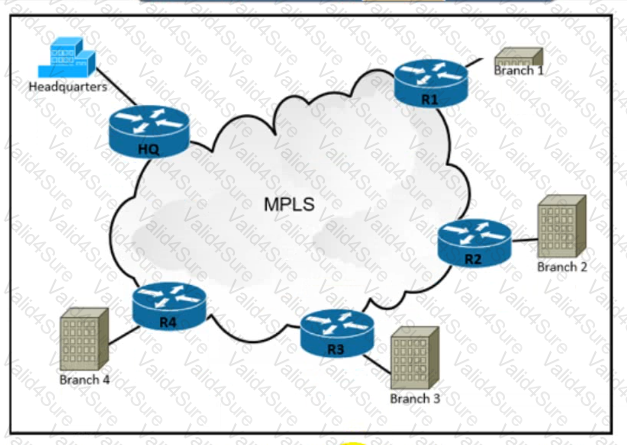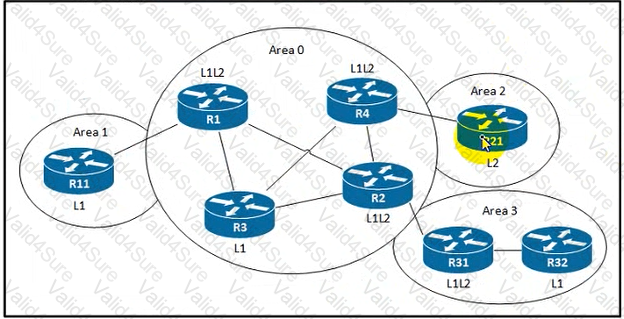300-420 Exam Dumps - Designing Cisco Enterprise Networks (ENSLD)

Refer to the exhibit. Currently, the network uses a single-homed solution for connecting to the internet. An engineer must design a more resilient WAN using the internet circuits at each site. The design must provide failover connectivity, support load-sharing of traffic, and QoS. Which solution must the engineer choose?
An architect must design a topology for a WAN network that satisfies these requirements:
Devices must be able to make informed decisions.
Suboptimal paths are allowed only In case of a failure.
Backup paths must always be available.
Which topology must the architect select?
Which two functions are provided by the Cisco SD-WAN orchestration plane? (Choose two.)
Refer to the exhibit.

An architect must design an IGP solution for an enterprise customer. The design must support:
Physical link flaps should have minimal impact.
Access routers should converge quickly after a link failure.
Which two ISIS solutions should the architect include in the design? (Choose two.)

Refer to the exhibit. A customer experienced an unexpected network outage when the link between R1 and R2 went down. An architect must design a solution to ensure network continuity in the event the link fails again. Which solution should the design include?
An engineer must design a multicast network for a financial application. Most of the multicast sources also receive multicast traffic (many-to-many deployment model). To better scale routing tables, the design must not use source trees. Which multicast protocol satisfies these requirements?